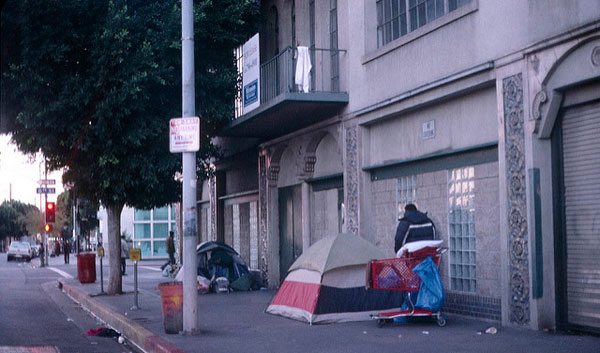
December 5, 2017; MedicalXpress
In a recent study of the Los Angeles County Housing for Health program, which provides chronically ill homeless people with permanent shelter, the Rand Corporation found that use of public services dropped significantly, reducing costs for the county. The study found a significant drop in the use of emergency medical services and a smaller decrease in the use of outpatient healthcare services. Overall, for every dollar spent on the supportive housing program, the county saved $1.20.
The Housing for Health program was launched in 2012. Rand examined the use of public services, including health care, among 890 individuals served by the program during its first 2.5 years. On average, prior to receiving supportive housing, these homeless individuals each cost the county public service programs $38,146. After receiving housing, average costs for public services were reduced by 60 percent, to $15,358 per person. Even with the additional cost of housing, the county saved money.
“These findings suggest that a permanent supportive housing program that targets people who are both homeless and are frequent users of county health services is feasible and may save local government money overall,” Sarah Hunter, lead author of the study, told MedicalXpress.
Best estimates suggest that over half a million people are homeless in the United States. In addition, nearly 40 million people spend more than 30 percent of their income on housing costs, leaving them vulnerable to missing rent payments and facing eviction.
Sign up for our free newsletters
Subscribe to NPQ's newsletters to have our top stories delivered directly to your inbox.
By signing up, you agree to our privacy policy and terms of use, and to receive messages from NPQ and our partners.
Samantha Morton, CEO of MLPB, a nonprofit that works with health systems to address the health-related social needs of vulnerable patients, commented, “The L.A. county program’s focus on high-need, high-cost adults makes sense given the potential savings from avoidable care utilization. That said, communities need housing solutions for people across the age and heath continuum—before the children grow up to be high-need, high-cost adults.”
Healthcare providers are increasingly recognizing that this crisis of homelessness and unstable housing is one of the major factors underlying the nation’s health inequities. If providers can ensure their patients have stable, affordable housing, they have a much better chance of improving their health and reducing overall healthcare spending.
In a recent article in the JAMA Forum, Robert Restuccia, executive director of the healthcare advocacy organization Community Catalyst, and Dr. Howard Koh argue that in a more perfect world, housing and medical professionals would collaborate as a matter of course. Clinicians would be prepared with the housing vaccine to prevent further illness and disability.
The authors note that as a result of the Affordable Care Act (ACA), these collaborations have multiplied in recent years. The ACA, through new payment and delivery models, gave accountable care and managed care organizations incentives to address the housing needs of their patients. Medicaid expansion and the Community First Choice Option program increased funding to transition people with disabilities into permanent and stable housing. In addition, the ACA requires nonprofit hospitals to develop community benefit strategies, and safety-net hospitals such as Boston Medical Center are directing their investments toward improving the affordable housing stocks in their communities.
Unfortunately, current federal actions aimed at destabilizing the healthcare system, could undermine efforts at innovation, Koh and Restuccia argue. If hospitals fear that health insurance coverage will be scaled back and uncompensated care costs will increase, they are likely to pull back on community benefit investments. Significant cuts to federal and state Medicaid funding and mandates could also increase vulnerability of low-income populations, increasing housing instability while reducing innovative programming designed to address housing and health needs.—Karen Kahn












